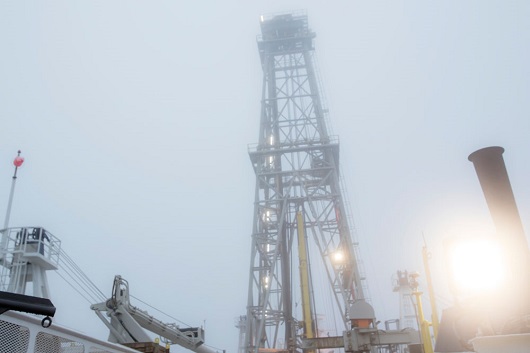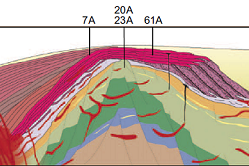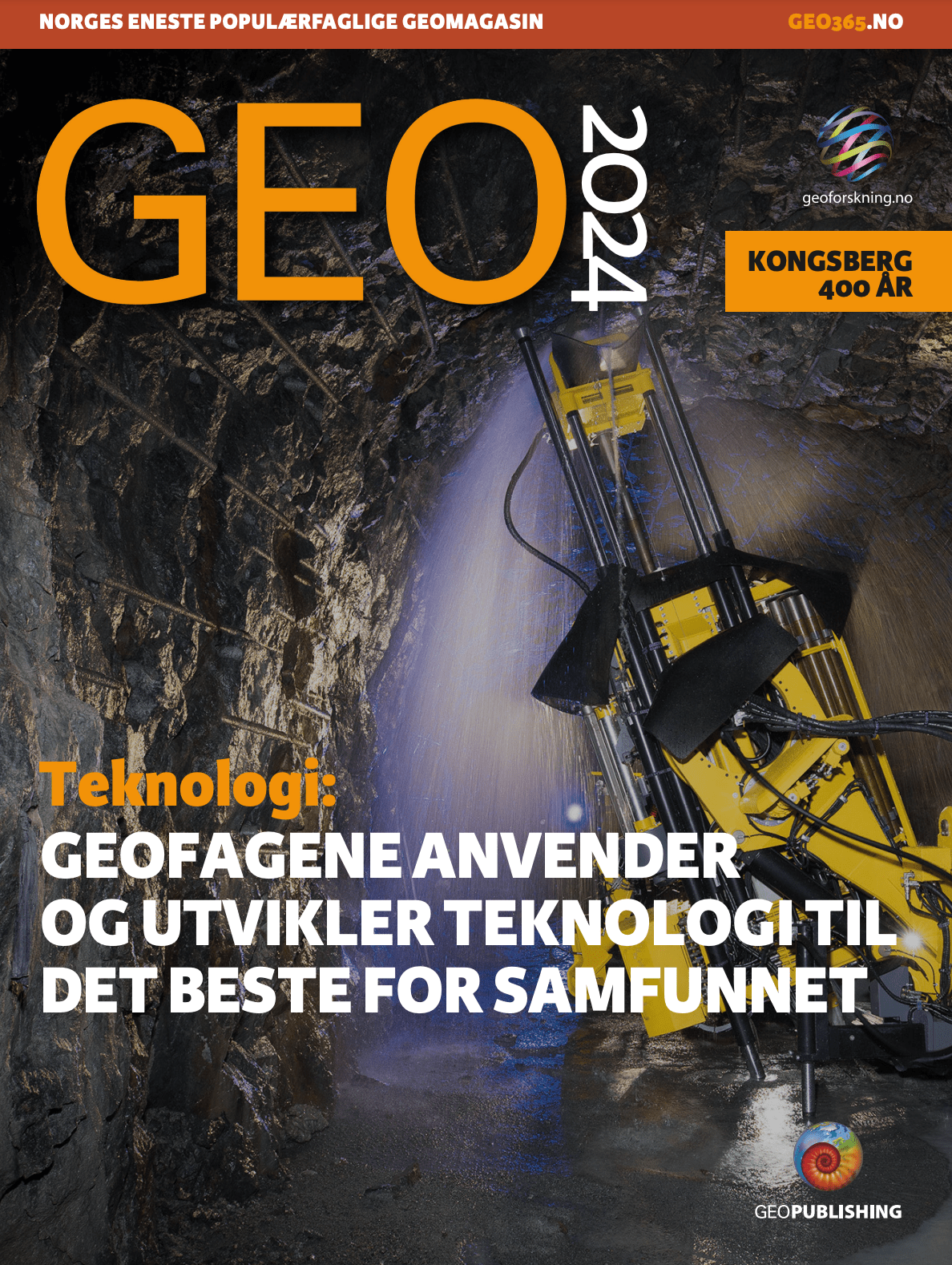The IODP expedition aims to understand how the great volcanic province of the Northeast Atlantic was formed, and how this volcanism led to global warming 56 million years ago.
 JOIDES Resolution will drill up to nine scientific holes in the Norwegian Sea. Here, the ship’s rig is depicted in fog. Photo: Sarah Kachovich / IODP JRSO
JOIDES Resolution will drill up to nine scientific holes in the Norwegian Sea. Here, the ship’s rig is depicted in fog. Photo: Sarah Kachovich / IODP JRSO
On 11 August, the drilling ship JOIDES Resolution sat sails from the port of Reykjavik. During the two-month cruise this autumn, the crew hopes to drill at nine locations off the coast of Central Norway.
– How many boreholes we manage to drill, will depend on, among other things, weather and operational conditions, says Sverre Planke, founder and general manager of Volcanic Basin Petroleum Research AS (VBPR) and professor II at the Center for Earth Development and Dynamics (CEED) at University of Oslo (UiO).
The expedition is carried out through the International Ocean Discovery Program (IODP). For well over 50 years, under various names and purposes, IODP has given us increased knowledge about resources, climate, tectonics and dynamics on Earth.
In short, it is a joint effort, where all members (Norway included) can submit proposals for new boreholes that may help to solve scientific riddles.
According to Planke, the IODP is the most important international geoscientific project that exists today. IODP has also previously drilled in Norwegian waters.
– A couple of expeditions were carried out off the coast of Svalbard in the 1990s. Drilling was carried out on the Central Norwegian shelf in 1974 and 1985, respectively.
Planke is the Co-Chief Scientist during the cruise in the Norwegian Sea, which is IODP expedition number 396.
 Batymetric map of the Central Norwegian margin showing the IODP drilling sites on the Vøring Plateau. Figure: Christian Berndt
Batymetric map of the Central Norwegian margin showing the IODP drilling sites on the Vøring Plateau. Figure: Christian Berndt
Volcanic rocks
This area of Norway’s continental margin is known for its widespread, kilometer-thick volcanic rocks. The volcanism is linked to the formation of the Atlantic Ocean about 55 million years ago where large amounts of magma (basalt) were pushed up and deposited on and under the seabed between Norway and Greenland.
The basalt layers are of great scientific value because they provide insight into the geological history of our part of the world and how the solid earth, the sea, the atmosphere, the cryosphere and the climate work together.
The rocks are also of interest to the petroleum industry because large amounts of oil and gas can exist in and under the basalt or they can be used for permanent storage of CO2. Prospective areas are often called sub-basalt.
Five of the nine boreholes are intended to collect samples from the lava flows.
 The upper profile shows how the continental crust and seabed crust are built up along the central Norwegian margin. The profile below shows where the drilling will take place. Illustration: IODP Scientific prospectus
The upper profile shows how the continental crust and seabed crust are built up along the central Norwegian margin. The profile below shows where the drilling will take place. Illustration: IODP Scientific prospectus
New knowledge on a climate mystery
56 million years ago, the world experienced a 170 000-year warm period (Paleocene-Eocene Thermal Maximum, PETM). The period is considered an unsolved mystery among geologists and climate scientists.
It is generally accepted that the temperature increase – up to 5-8 ° C – occurred within a few thousand years, and that the temperature later has never been higher than it was then. The heat pulse was also special because it began and ended very abruptly.
Planke and colleagues launched a hypothesis just over 15 years ago which explains that the rapid and short-term increase in temperature could be due to emissions of unusually large amounts of methane into the atmosphere.
Data from seismic and an exploration well in the Norwegian Sea revealed hundreds of craters under the current seabed that testified to rapid emissions of gases, preferably methane, from the sediment basins.
The emissions occurred during the period of volcanic activity in connection with the opening of the Norwegian Sea, and according to the hypothesis, hot magma melts penetrated into sedimentary rocks and matured the organic material so that it formed enormous amounts of methane.
In the scientific prospectus for Expedition 396, Planke, Christian Berndt (Co-Chief Scientist, GEOMAR) and Carlos A. Alvarez Zarikian (Expedition Project Manager / Staff Scientist, Texas A&M University) point out that the total amount of magma deposited in the so-called North Atlantic Igneous Province (NAIP) in Paleogene 6 – 10 x 10 ^ 6 (million) km3.
In comparison, the volume of Lake Mjøsa is 56 km3.
Although the eruptions occurred over a period of several million years, the largest volumes of magma are said to have been pushed up around the boundary between the Paleocene and Eocene periods. Four of the nine boreholes aim to obtain sedimentary rock samples from paleogen and PETM.
The expedition will end on October 6th.
|
Expedition 396 – Scientific objectives (short)
1. Determine the role of the Iceland plume in producing excess magma along the mid-Norwegian segment of the northeast Atlantic volcanic rifted margin during the Paleogene by constraining the conditions of melting (temperature, pressure, mantle sources, and total degree of melting).
2. Determine the cause for along-axis variation in melt production.
3. Determine the depositional environment (subaerial vs. submarine) of inner and outer lava flows (e.g., SDRs) and implications for vertical motions during late synrift, breakup, and early postrift oceanic spreading.
4. Determine the timing of magmatic activity and document the occurrence and temporal evolution of paleoclimate and volcanic proxies in sedimentary sequences proximal to the NAIP.
5. Use the integrated paleoclimate and paleoenvironment proxies and geochronological data to assess the relative importance of volcanism and thermogenic release from hydrothermal vent complexes as potential drivers of climate change events.
Furthermore, there are two secondary scientific objectives:
1. Early Eocene hothouse and freshwater incursions into the North Atlantic.
2. Carbon capture and storage in basalt provinces.
|



